Lesser Kestrels are one of those birds that have a special fascination for British birdwatchers. They are very rare birds in Britain, but have been recorded from Scilly in the south to Fair Isle in the north. They can be challenging to identify, especially if you haven’t seen one before, though with experience they are not really so difficult. Lesser Kestrel really is an appropriate name, for they are a lesser bird than the familiar Common Kestrel. They weigh less, and their wings and tail are both shorter, giving them a rather more compact appearance.
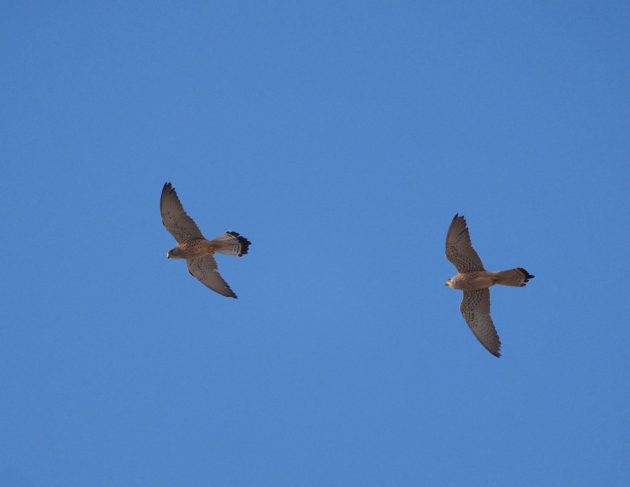
There are distinct plumage differences, too. The cock is an altogether brighter bird, his red-brown back unspotted, his head a brighter shade of blue, and without the bigger bird’s distinctive moustache. The female is rather more subtle in her differences to Falco tinnunculus, but one characteristic that both sexes share are the elongated central tail feathers (see the photograph above). And unlike the Common Kestrel, Lessers are highly gregarious. If you see a flock of kestrels in southern Europe, then the chances are that they will be Lessers, for the Common Kestrel never flocks, though occasionally in summer you will see a family hunting together.
In Europe, Lesser Kestrels are birds of the Mediterranean zone, nesting mainly in Spain and Portugal, southern France, Sardinia, the Balkans and parts of Greece. They are generally regarded as summer visitors, arriving back from their wintering grounds in Africa in March, and departing again in September. However, in Southern Spain a small number of birds are resident. This isn’t a new development linked to global warming, but was first noted 80 years ago. Intriguingly, it’s only the adults that remain, while my observations suggest that it’s mainly the cocks that stay. Last month in Andalucia I saw only males. Perhaps some females remain, too, but I didn’t see any. (The photograph below, showing a pair at their nest hole, was taken at Tarifa, Spain’s southern-most town, in April.)
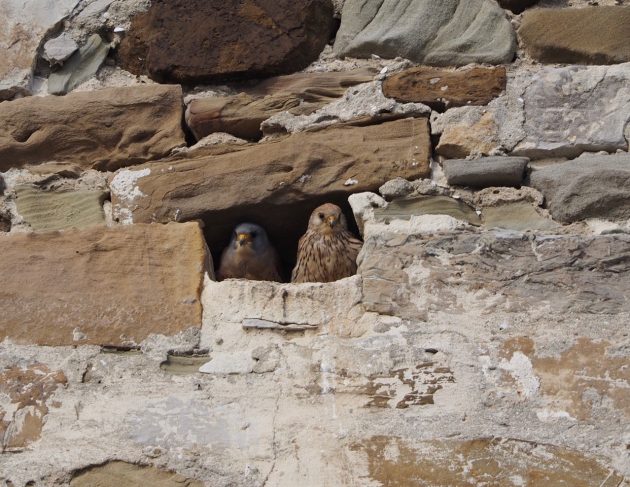
On their breeding grounds in Spain, Lesser Kestrels are very much city birds, for 95% of the population nests in towns. I saw my first on Seville Cathedral more than 50 years ago, and I’m delighted to say that this huge Gothic building (one of the biggest churches in the world) still supports a colony today. Work on the cathedral started in 1402, and it took a century to complete: I wonder when the kestrels first started nesting there? The kestrel colony is valued by the city of Seville: in recent years renovation work on the roof of the cathedral was suspended during the falcons’ breeding season.
Last month I visited three Andalucian cities with colonies of Lesser Kestrels: Arcos de la Frontera, Marchena and Carmona. I wasn’t confident that I would find any birds at all in early February, but though numbers were small at each site, several individuals were present, and there were noisy territorial displays, despite the absence of females. According to the Birds of the Western Palearctic, they will attack Ravens and Egyptian and Griffon Vultures if they stray too close to their nest sites, while ignoring buzzards harriers and kites. However, the appearance of a Peregrine or Booted Eagle “causes widespread panic at the colony, birds circling up high into the sky to avoid them”.
BWP also notes that these birds are predominately, though by no means exclusively, insect eaters, which poses the question as to what these over-wintering individuals eat. The answer is likely to be a higher percentage of small mammals and birds than they take in the summer.
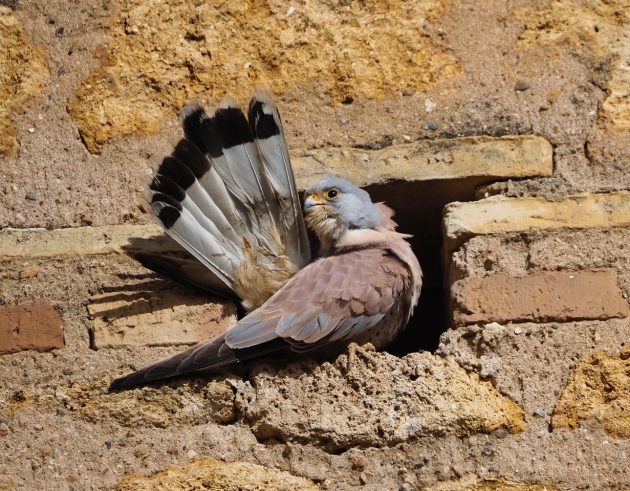
Watching flocks of these attractive little falcons feeding is aways a delightful sight. They usually fly low over the ground, and as BWP describes, continually turn into the wind to hover briefly before making another circle. The hovering is generally for shorter periods than that of Common Kestrels, with less wing flapping.
I have fond memories of watching flocks feeding on the open veld in South Africa, where thousands spend the winter. The birds I saw there were most likely Asian breeders, for they don’t start to migrate north until March, by which time the European-breeding birds are already crossing the Mediterranean.
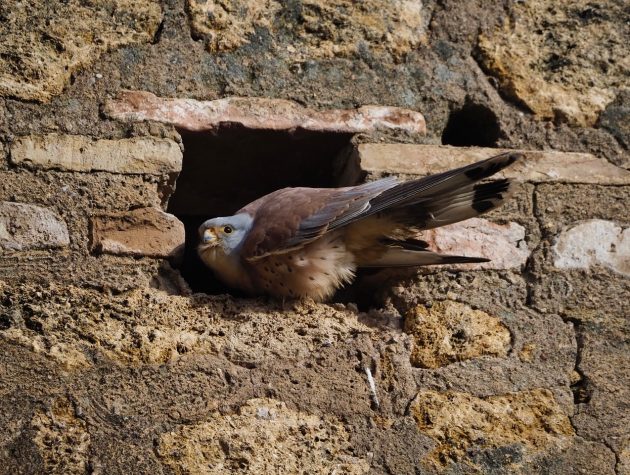
The number breeding in Europe is almost certainly much reduced from what it was a century ago, but in Spain the birds are now valued and protected. The population in Andalucia in 2012 was 5,057 pairs – over one third of the Spanish population. However, a drastic decline followed, and census results for 2016 and 2017 produced counts of around 2,500 pairs. It’s unclear as to the reasons, but it’s thought that agricultural intensification, reduction in prey availability and the destruction or demolition of old buildings have all contributed. The conversion of open land to intensive olive groves has also had a negative impact on the colonies: today there are parts off Andalucia where olive groves stretch from one horizon to the other, a depressing EU-funded monoculture that is disastrous for biodiversity.
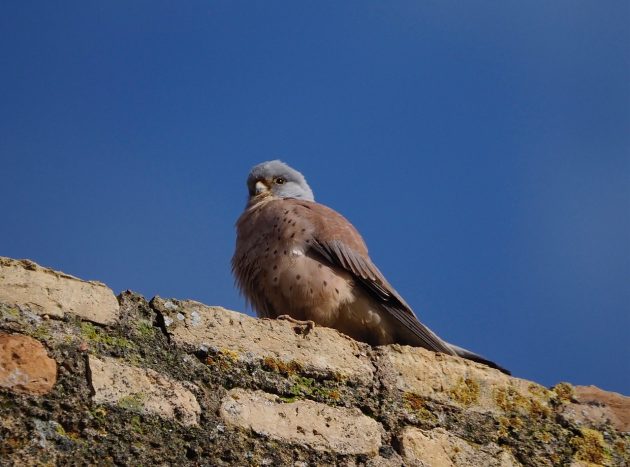
However, the Lesser Kestrel has received help. The Grupo para la Rehabilitación de la Fauna Autóctona y su Hábitat (GREFA) started a ‘Corridors for Lesser Kestrels’ project in 2006, and by 2012 it had installed over 2,000 artificial nests across the regions of Andalusia, Castilla-La Mancha, Extremadura and Madrid. Finance came from national and regional governments. The new nests achieved an impressive occupancy rate of around 50% and allowed 30 new colonies to be established.
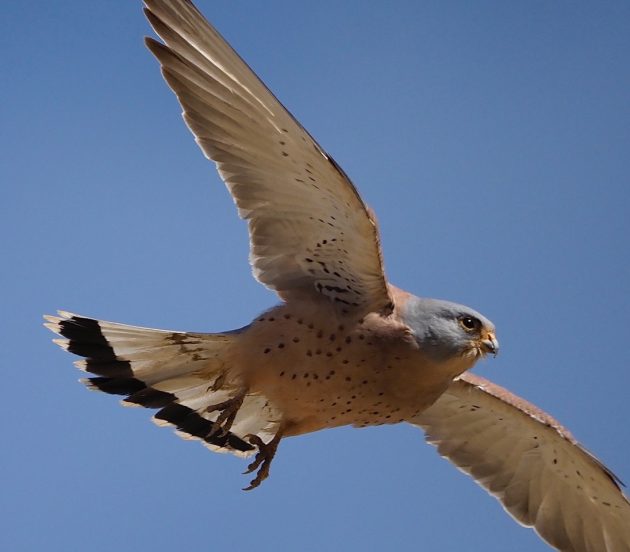
Some years ago I visited Villafáfila in Castile Leon. Here many of the ancient dovecotes have been restored for the kestrels to nest in. These dovecotes form an attractive feature of the countryside, so their restoration delights the eye as well as helping the kestrels. Incidentally, this region of Spain is notable for its population of Great Bustards, with the highest density in the world. Watching a drove of bustards feeding across the steppe, accompanied by flocks of foraging kestrels and singing Calandra Larks, is a memorable experience.
Source link


